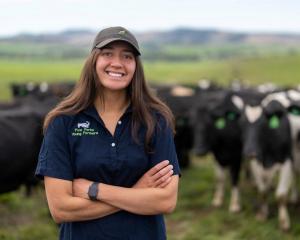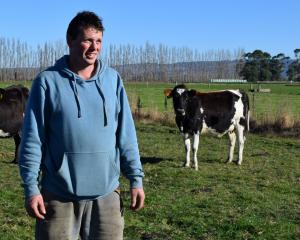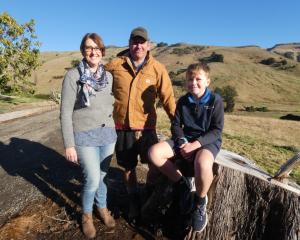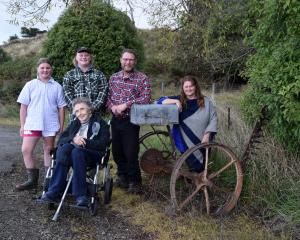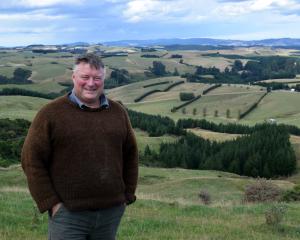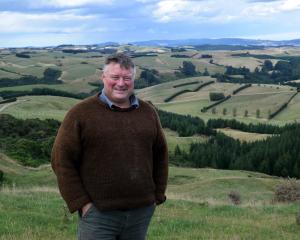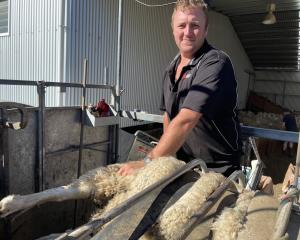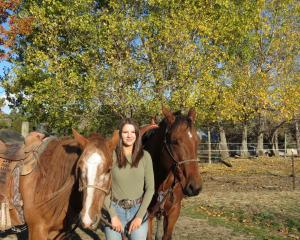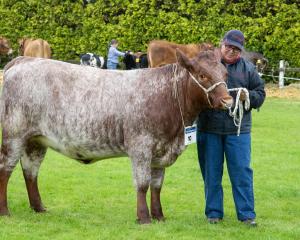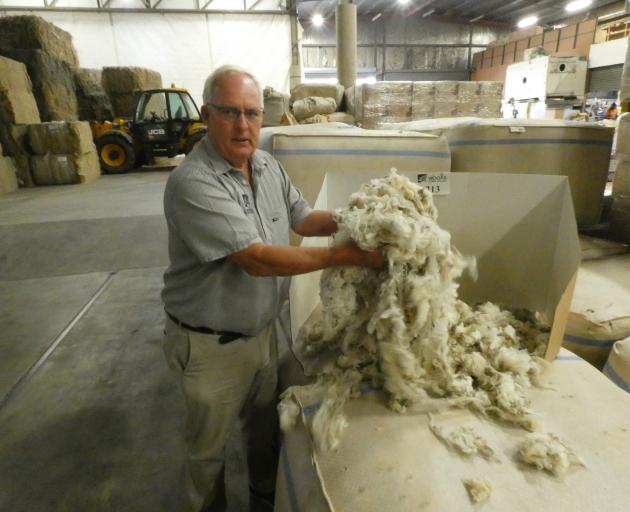
Wool auctioneer Roger Fuller has in theory put down the hammer for the final time after 45 years in the wool industry.
Over this long stint, the Christchurch man has sold billions of dollars of wool.
The retiring 66-year-old bows out of the industry taking with him many great memories.
Entering as a youngster at the tail end of the glory years, he has seen its many twists and turns.
No longer will he be cross-checking wool lots for their crimp, staple length, tenderness and lustre and then with a practised eye setting and negotiating reserve prices for farmers.
Then, there is the hum of the auction room and the camaraderie of working alongside farmers, exporters and manufacturers he will always cherish.
But it is time to move on to travel and spend time with the family and the golf course.
"I feel I’ve given as much as I can to the industry and go to greener pastures and look at what’s best for me now. Time for someone else to step up."
Technically, the auction manager for Wools of New Zealand cleaned out his desk earlier this month.
His exit will be short-lived as he will continue auctioneering a couple of hours every second week for the farmer-owned company.
Change has been the constant as he progressed through the many folds of company and co-op mergers, acquisitions and coalitions.
"I said to my wife you struggle to find out what company I didn’t work for. I worked out that I’ve been with seven different companies — that’s seven different shirts, but within some companies they had a bit of a brainwave and change the uniform so I probably had nine or 10 uniforms.
"I’ve said it before and it’s the relationships you build up and a lot of wool people stick with wool. If you get a relationship with a farmer and you understand their business they stick with you and it’s not who you work for, but the person who works for them."
Sweeping changes extend to a much reduced national flock and ever-evolving land uses as dairy, trees and grapes eroded sheep country with the wool clip shrinking in tandem.
Tenure reviews and retired land have made further inroads.
On many farms, irrigation has brought about new-look systems with hill and high country properties transitioning from exclusively breeding to finishing operations. Composite sheep producing more lambs were favoured and sheep breeder numbers declined.
As a result, wool quality has gone backwards. Farmers have shifted from second shear to once-a-year full wool shearing, stretching this from January closer to tupping in February or March, before lambing.
Mr Fuller said his 45 years in the industry had been an exciting time, but not without its ups and downs.
"One year is never the same but it’s been fascinating to watch and then you are combating wool prices at the same time. The other issue we have now are the sheep bred for shedding wool."
There is no soft soaping the plight of strong wool today, as everyone concerned is well aware of downward prices and higher costs making it difficult for farmers to stay the course with crossbred wool. Even mid micron — the darling of sock and other knitwear retailers — has not been immune lately.
"We can’t blame shearing costs because they have to do that and that’s fine. The wool should pay for it and a bit more, but now it goes under an animal health budget.
"You’ve got to stay positive ... You can’t pull the wool over people’s eyes and have to be realistic.
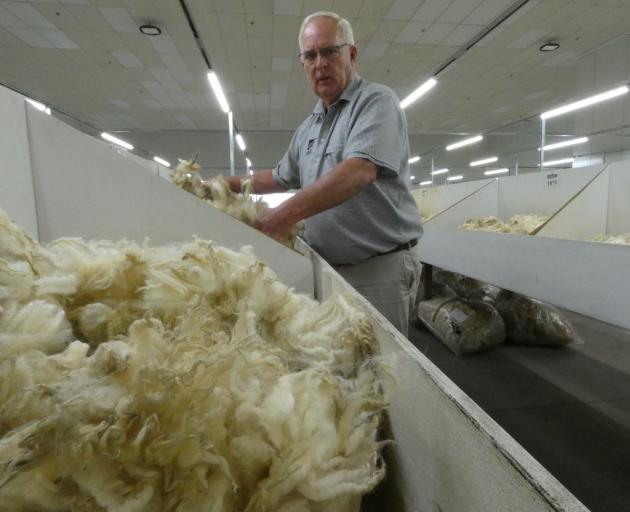
Like others, he struggled to see how there was not more demand for strong wool, even taking into account the rise of synthetic alternatives.
The natural fibre is sustainable, biodegradable, odour-resistant, fire retardant and the list goes on for its many qualities.
"It’s a fantastic product, it really is and it’s just a shame it doesn’t sell for more. Again, it comes down to cost and to process it in New Zealand our labour costs are high and we can’t do that so it has to go offshore.
"Everyone has tried to have a crack at adding value and giving a better return to the farmer.
"In Canterbury and Otago where a lot of mid micron wool is grown Corriedale and the Halfbred sheep produce the majority of this wool and suit the dry conditions in these areas. A Corriedale and Halfbred can survive when it’s dry, but now with the change of farming and with irrigation there are more opportunities."
Mid micron wool between 27 micron to 28 micron wool was selling for $10 a kilogram clean five years ago and is now struggling to get $4/kg.
Even strong wool types rose to about $8/kg clean in a one-off year some time ago when wool was in demand for a short period.
Too often, he had seen these short rises biting the market on the backside as they were unsustainable.
What goes up sharply usually comes back down at speed. Steady increases are preferable.
Farmers needed a minimum clean price of $6/kg-$7/kg ($4/kg-$5/kg greasy) today to cover costs instead of the $3/kg-$3.20/kg clean price, Mr Fuller said.
"The current Chinese economy is not helping at the moment. India has probably taken over that slack a wee bit, but certainly China is a big taker of New Zealand wool."
He wanted the world to wake up to its value and ideally pay a premium price for our clean, green image.
However, he accepted New Zealand’s long distance from the rest of the world and the ease of making a poor wool look good in the manufacturing process were stumbling blocks that need to be navigated.
Many farmers have attempted to make, market, sell and export a niche product in a complex wool business. The best minds have proposed industry-wide changes only to achieve little.
Notwithstanding all the challenges, he had no regrets about his choice of career.
The seed for this was sown when the town born-and-bred youngster was at a Christchurch school, mixing with farmers’ sons and listening to their stories.
A careers evening only firmed Mr Fuller’s resolve to venture into wool trading.
So, fresh out of school, he accepted a job with Wrightson National Mortgage in 1975 on the mail desk then progressing into the merchandise department.
A change of direction into grain and seed for the stock and station agent was followed by work in the wool store at Opawa. He briefly spent time on the wool classing floor before being sent by the company to Lincoln University.
An insight into the strength of the industry at the time were the 60 students attending a three-month wool course.
In the late 1980s he was put out on the road as a wool representative.
Canvassing for wool saw him secure new business, retain clients and set up wool classing in wool sheds to keep the wool flowing into the auction floor.
By far the most rewarding part was talking with farmers and going through their farming operations.
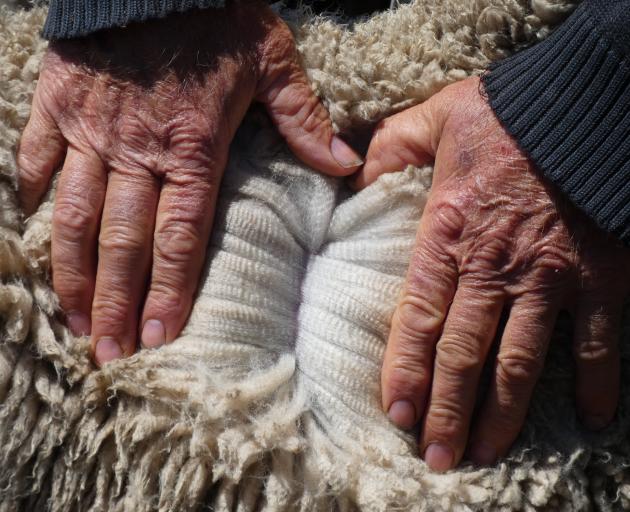
"I covered Mid Canterbury to North Canterbury when there was a lot of Corriedale and crossbreds and the odd Merino clip. But unfortunately, the time I was on the road was in the late 1980s, when farming was pretty tough.
"We had droughts, we had high interest rates and poor returns and farmers were struggling. As wool reps, we weren’t comfortable fronting farmers knowing the stress they were going through and consequently for a period of time we got taken off the road — it was awful."
Soon afterwards, the severe snow storm of 1992 caused heavy stock losses in Canterbury. Mr Fuller sometimes wonders if this was the moment that pushed wool farming too hard.
"It was around pre-lamb shearing and there were a lot of losses — just awful. I don’t think we’ve ever recovered from it.
"When you look at the numbers back then to where they were leading to, then I don’t think people restocked to the same extent. We had been in the Muldoon era of subsidies and the more feet the more you got paid and that sort of carry on.
"I think people just pulled back because they couldn’t handle all that."
He had grown to admire farmers for their stickability against the elements, red tape and market whims.
"I felt very privileged to sit down and discuss with them market trends, preparation requirements needed for the forthcoming shearing and, where necessary, recommend wool classers."
When stock companies financed farms it was a virtual guarantee their business went through them and wool was a hefty part of their income then.
Budgets had to be accurate and wool reps had to know when their shearing was carried out and wool proceeds would hit their account.
For fine wool farmers, the fibre represented about 80% of their income. It was big business then.
A new phase arrived when a wool manager thought he had a good voice and asked if he would consider auctioneering.
He recalled being extremely nervous in his first auction.
The wool exporters were good to him at first, but he knew there would be no coming back from a major muck up.
Unlike stock auctions, there were no quick puns to warm the room and he just had to concentrate on getting through three or four pages of the catalogue without a hitch.
To perfect his auction style, he would practise in front of a mirror. The more he proved himself, the more time he spent leading the auction floor in Timaru, Dunedin and Christchurch.
Standing on the rostrum, his priority was to extract every cent for the farmer as they "paid the bills". He’s been accused by buyers of being deaf or suffering from arthritis when refusing to lower the hammer until a final bid was gained.
As his time in the auction room progressed, he found himself in the middle of many a merger. Wrightson morphed into the Wrightson Dalgety merger in the 1980s with staff numbers, wool volumes and catalogues doubling.
"I used to go to Dunedin and help them out with fine wool sales and we would start at 8am as a broker and that was 1500 lots. The sales would not finish till 9pm.
"So there could be 10,000 or 11,000 bales and sometimes more. As I progressed, farmers requested me to sell their wool and back in the late-1980s when merino prices were high I was selling growers clips up to $1million wool cheques or just a bit over for a couple hundred bales which was big money.
"Back then it wasn’t ultrafine wool and you were talking maybe 17 microns or it might have been even coarser than that — 18 to 21 microns — and a lot of that was going into the Italian and Germany mills."
Later in the mid-1990s he transferred with his family — three children under 9 years — to Dunedin for two years to become the area’s assistant wool manager for Wrightson Dalgety.
"Otago was second to none down there and for a wool growing and agriculture region it would beat anyone. You had the magnificent crossbred clips, the Maniototo halfbreds and the Central Otago Merinos and it all went through auction. So you were seeing magnificent wool.
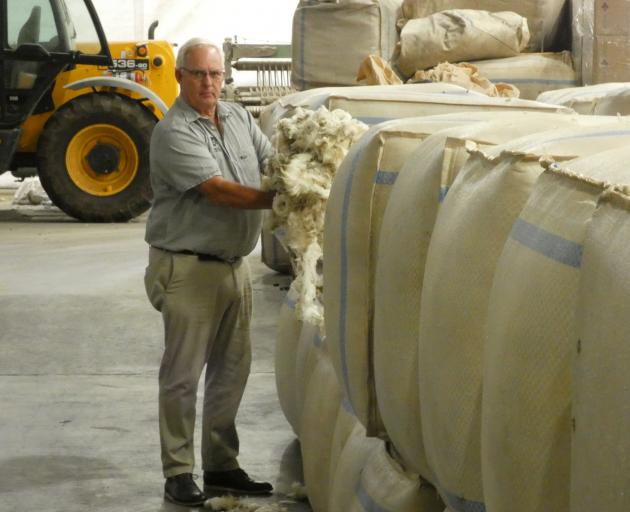
Returning to Christchurch, he became the assistant wool manager for the region.
Further mergers followed including PGG Wrightson. After 30 years under the Wrightson umbrella, he moved across to Elders and stayed on when it became Elders Primary Wool and then sold to the locally family-owned Carrfields.
For the past three years, he has been with Wools of New Zealand, continuing to work with farmers, inspecting and preparing wool for auction and contracting or selling wool afterwards.
Over the course of a long career, he has sold wool ranging from 12 to 45 microns as far as Invercargill to Napier.
Outside of the auction room, he’s enjoyed meeting Italian, Indian and Chinese clients brought to the country by exporters to learn of their needs and see how they work.
Road shows to promote companies have taken him around the country. For 30 years, he has judged local and national fleece competitions and many Christchurch A&P shows, receiving the Legend award in 2022 in recognition of his service. Only at these shows is the pick of the wool seen nowadays, as much of it is contracted.
Mr Fuller was quick to defend wool exporters who had come under criticism for wool’s lower prices today.
He reminded everyone that these companies buy wool through good and bad times and were vital for taking up the slack and promoting the national wool clip when the NZ Wool Board wound up.
"I do remind people who say exporters are selling the wool clip cheap that when you go to an auction to buy lambs or bulls you want them as cheap as possible.
"I’ve seen many premiums paid at wool auctions over the years and when prices lift there is no complaining. Exporters certainly have the farmer in their mind when trying to get the wool price up.
"There are not many systems that pay a farmer 11 days after the sale."
He is equally fast off the draw to champion the work of farmers and the major role they play in the economy.
And he shares their frustration.
"The farmers are the custodians of the land. He’s up against so much red tape and compliance, you wonder why he does it compared with 30 years ago. It is a good lifestyle but a farmer now is behind the desk doing the books or he’s got to be out the back fencing waterways.
"Their labour unit now is just about the husband and wife as getting labour comes at a cost on most farms.
"It is sad because agriculture is a big receipt for our country and for all those involved there’s only one guy who pays the wages — and that’s the farmer."
The wool brokering business was about relationships and farmers liked to build a relationship with people they could trust to manage their business, he said.
They would often stick with an individual when companies came and went. If they moved on, it was usually because they had a better bottomline return and this had to be accepted, he said.
He remembered once going to source wool from a large car salesman who owned two or three farms in Canterbury.
After a long meeting, he was asked if he wanted to be a car salesman.
The offer was politely turned down, as despite its many ups and downs, he never wanted anything else but to "stick to wool".
"I always said I would love to leave the industry on a good note. Well, how long is a piece of string? You see the odd lift in the market and that’s fine, but it’s time for me to move on. I hope things pick up for everyone’s sake. It makes the job easier, farming easy and everyone’s happy."


